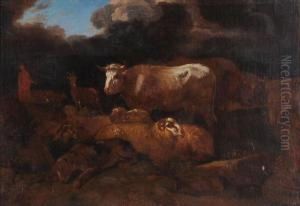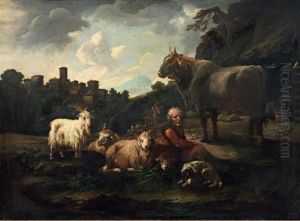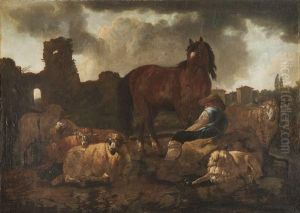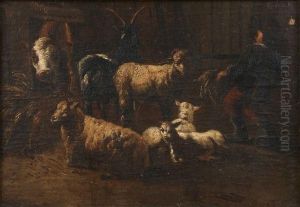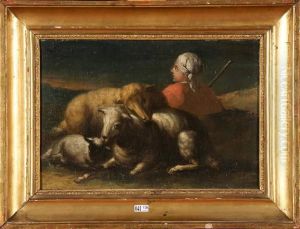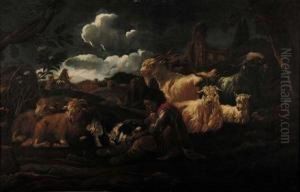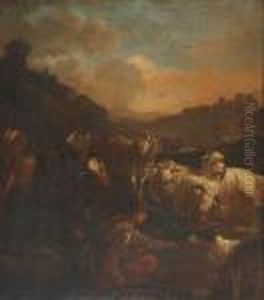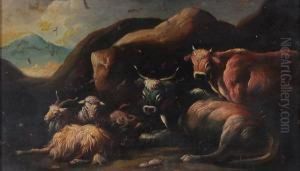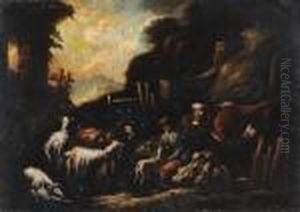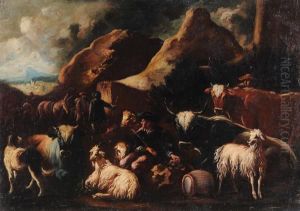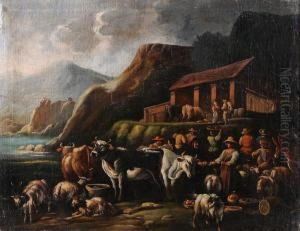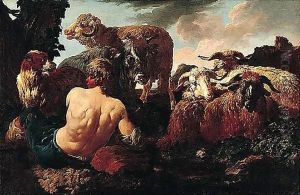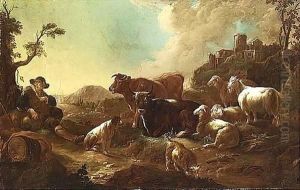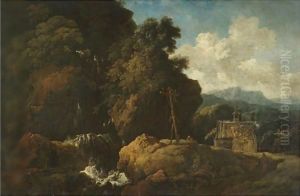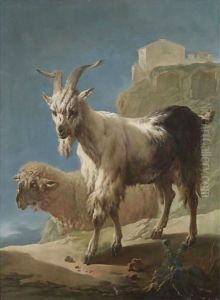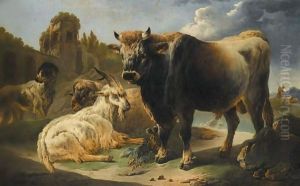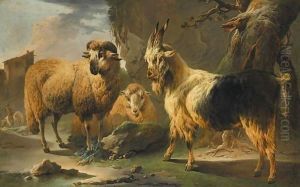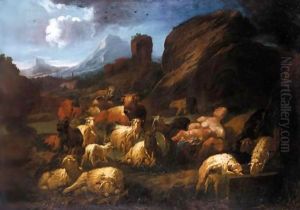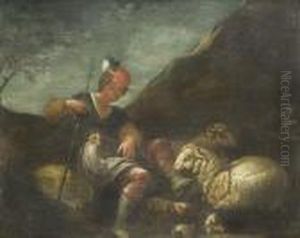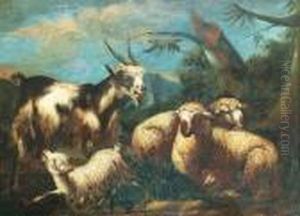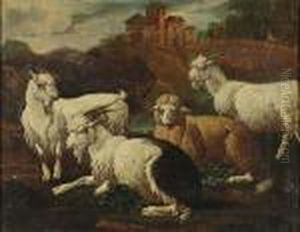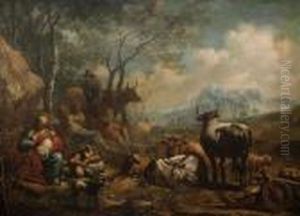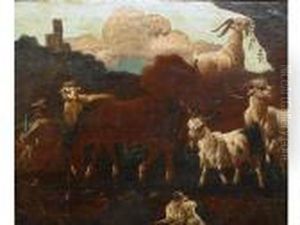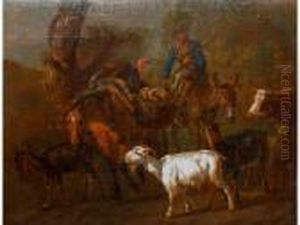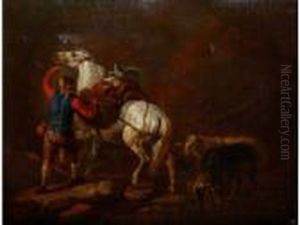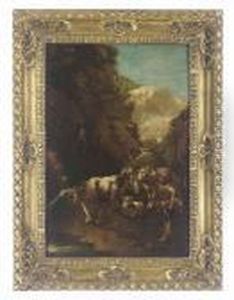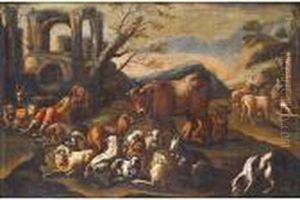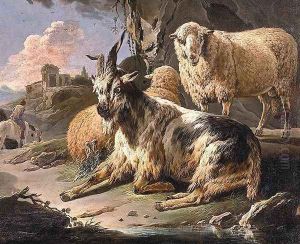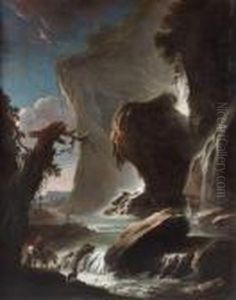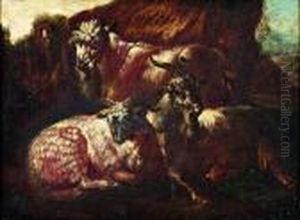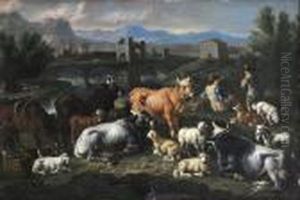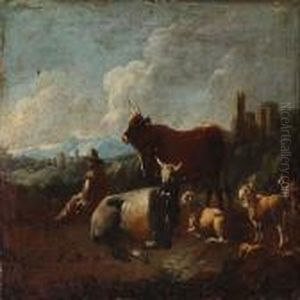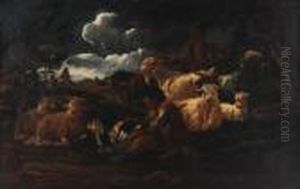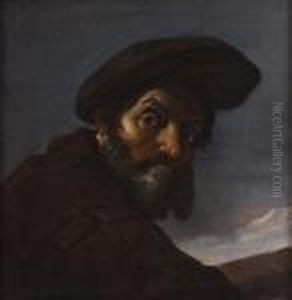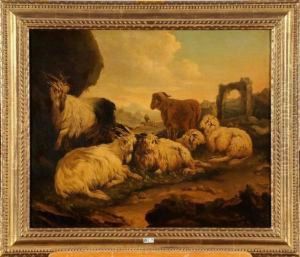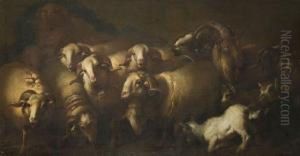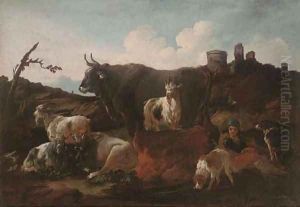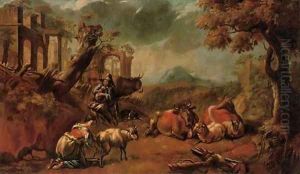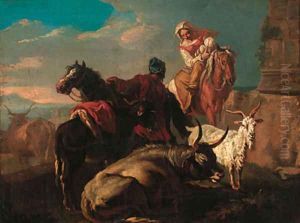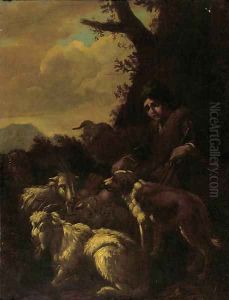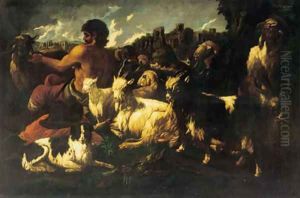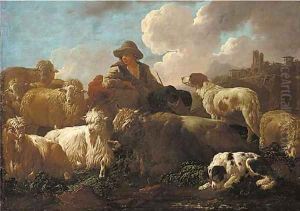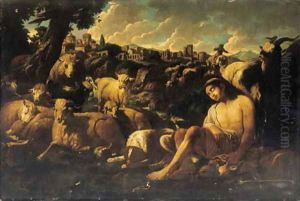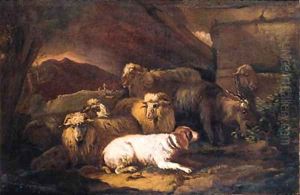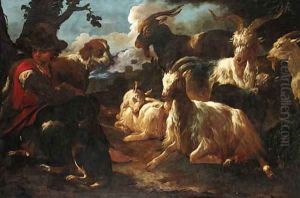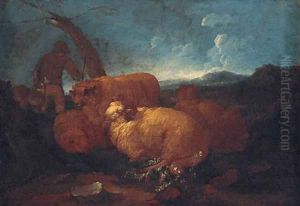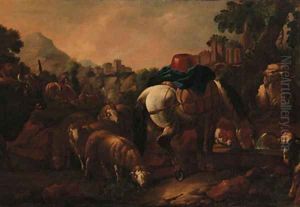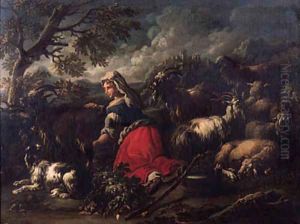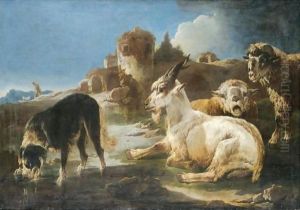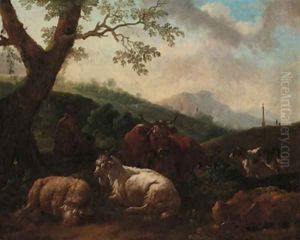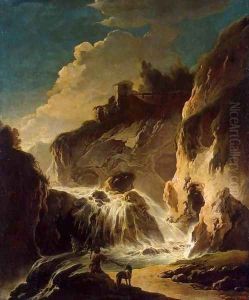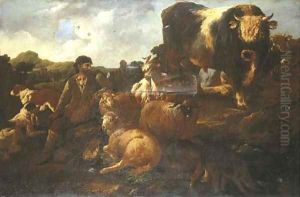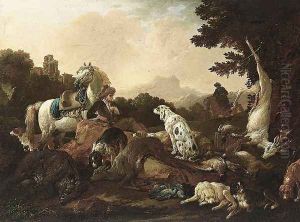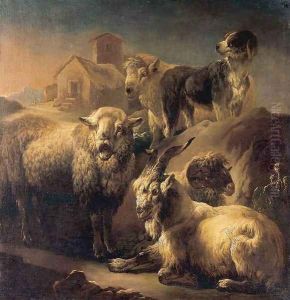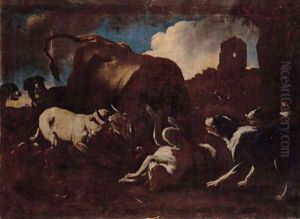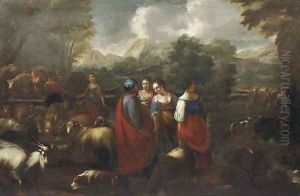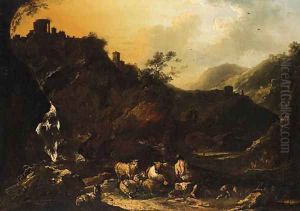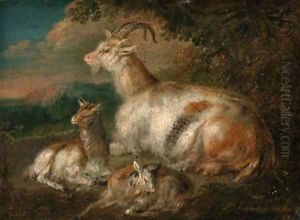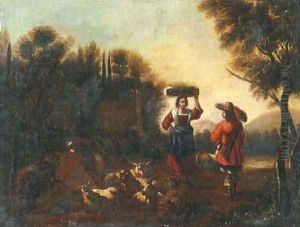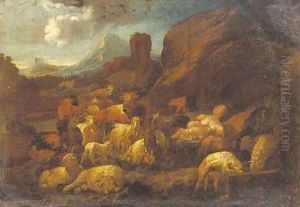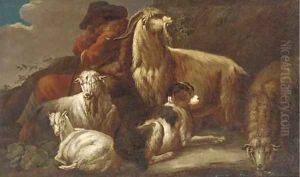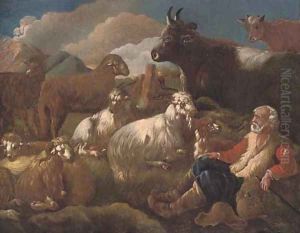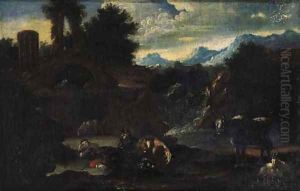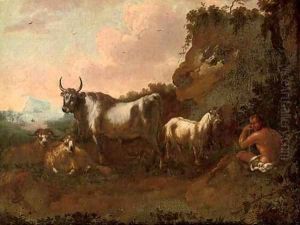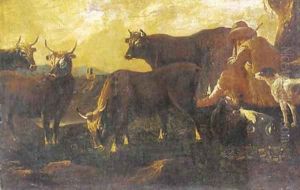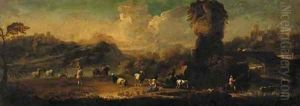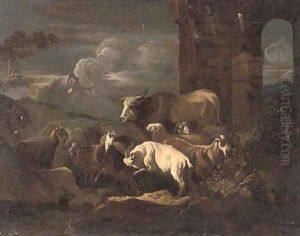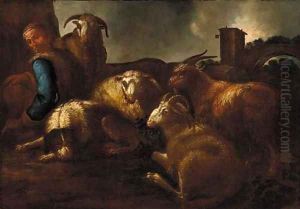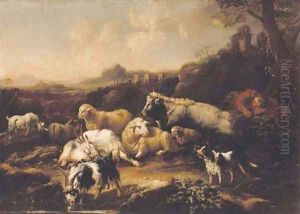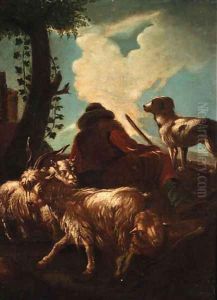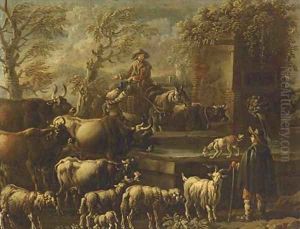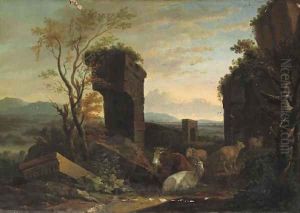Philipp Peter Roos Paintings
Philipp Peter Roos, often known as Rosa da Tivoli, was a German painter born in Frankfurt am Main in 1657. He was renowned for his vibrant and dynamic animal paintings, landscapes, and pastoral scenes. Roos was part of a notable family of artists, being the son of the painter Johann Heinrich Roos and part of a lineage that significantly contributed to the development of animal painting in the 17th century.
Roos received his initial artistic training from his father, who was an accomplished landscape and animal painter. This early education laid the groundwork for Philipp Peter's specialization and expertise in depicting animals with remarkable accuracy and vitality. In pursuit of further artistic development, Roos moved to Italy in his early twenties, around 1677, where he spent most of his life. It was in Italy, particularly in Rome and its countryside, that he earned the nickname 'Rosa da Tivoli', reflecting his affection for the Roman suburb of Tivoli, where he frequently painted.
During his time in Italy, Roos was heavily influenced by the Italian masters, incorporating their techniques and styles into his own work while retaining a distinctive approach to animal painting. His works often depicted pastoral scenes filled with sheep, goats, and other livestock, rendered with a remarkable sense of realism and an eye for the intricate details of the natural world. Roos's ability to capture the texture of animal fur and the play of light on the landscape demonstrated his exceptional skills and contributed to his reputation.
Philipp Peter Roos's impact on the art world extended beyond his lifetime, influencing subsequent generations of animal painters. His marriage to a Roman woman and his integration into the local society allowed him to establish a successful career in Italy, where his paintings were highly sought after by collectors and patrons. Despite facing competition from other artists in Rome, Roos's unique style and mastery of animal and landscape painting ensured his enduring legacy.
Roos died in 1706, leaving behind a rich oeuvre that continues to be celebrated for its contribution to the genre of animal painting. His works are preserved in various museums and collections around the world, serving as a testament to his skill and artistic vision. Through his paintings, Philipp Peter Roos not only captured the beauty of the natural world but also laid the groundwork for future artists in the genre.
